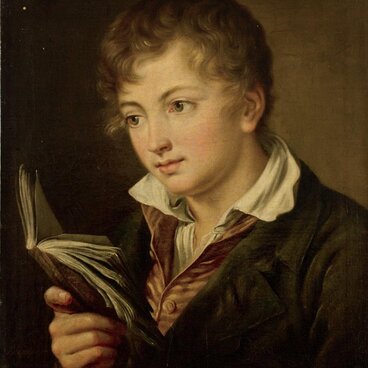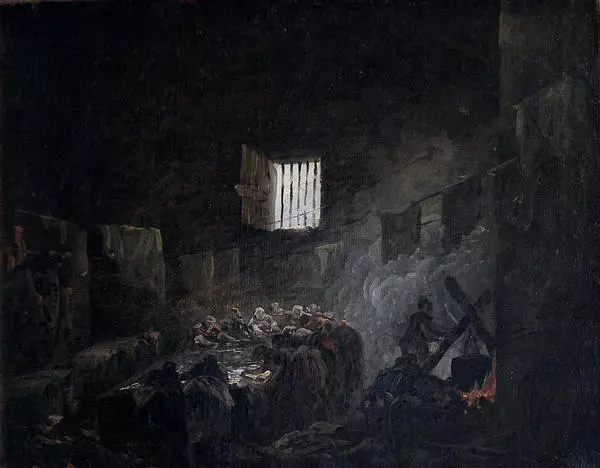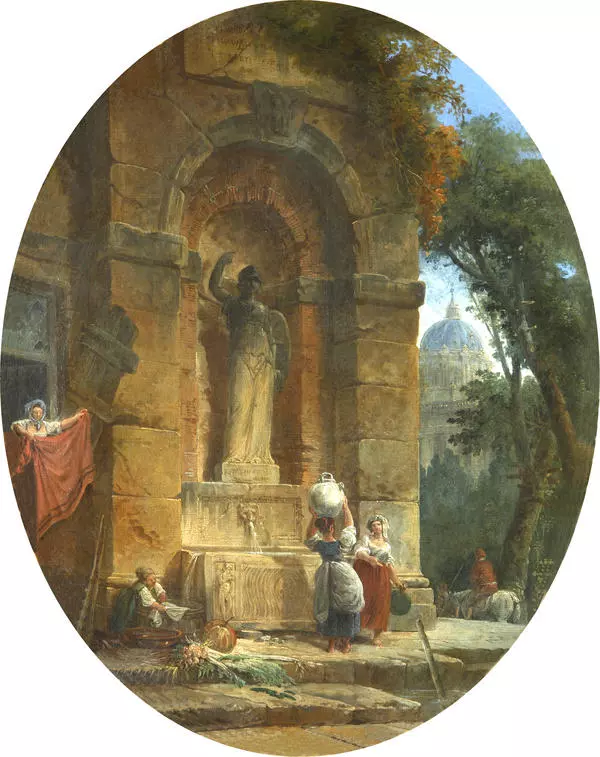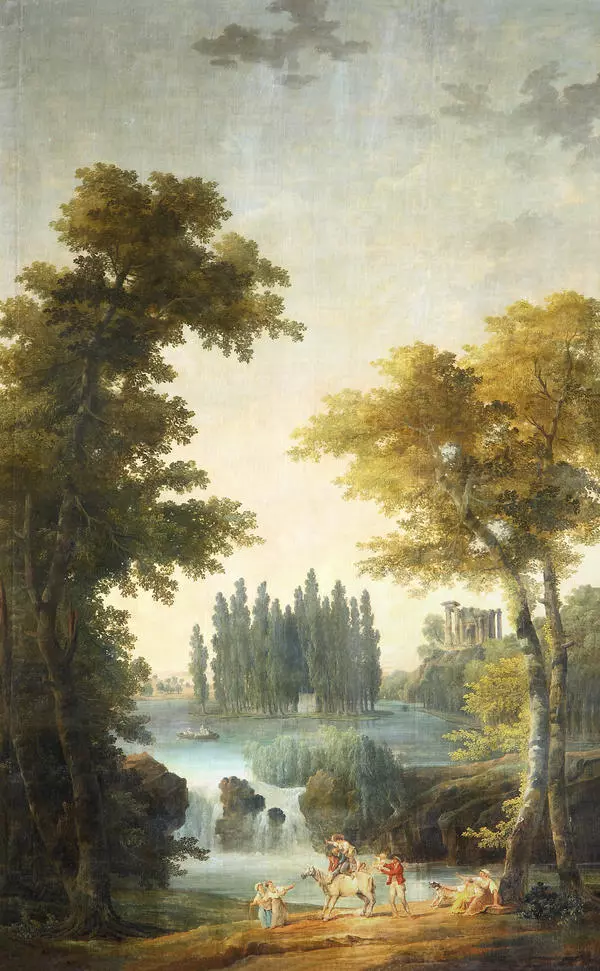The exhibition of the Sevastopol Art Museum named after Mikhail Pavlovich Kroshitsky features the landscape “River in the Park” by Hubert Robert, dating from 1786. This work was created with great skill and reflects the artist’s achievements over the last 10 years of his career, as well as his desire to convey the beauty of nature. The painting depicts the construction of a farm of Marie Antoinette near a small pond, which represents an ideal place reigned by patriarchal values in the spirit of Rousseau’s ideas. Construction was completed by 1785, and this landscape from the Sevastopol collection may be one of Hubert Robert’s variations on “The Queen’s Hamlet”.
In the second half of the 18th century in Europe, Jean-Jacques Rousseau (1712–1778), a famous philosopher and representative of sentimentalism, promoted communion with nature. He denied class differences and idealized the life of an ordinary person in the countryside. At a capricious request of Queen Marie Antoinette of France, the Petit Trianon Garden at Versailles, the country residence of French monarchs, was rebuilt. Hubert Robert, along with other artists, took part in the project. On the site of the former Louis XV botanical garden, architects, gardeners, and painters worked together to create “Hameau de la Reine”, or “The Queen’s Hamlet”. It was believed that such a place would allow people to reflect on the past and remember their ancestors who lived a simple arcadian life.
Hubert Robert (1733–1808) was a French painter, a renowned master of architectural landscapes. Between 1745 and 1751, he studied at the prestigious Parisian Collège de Navarre with the Jesuits. After completing his studies, Robert worked as an apprentice for three years with the sculptor Michel-Ange Slodtz, a great admirer of classical art. In 1764, Robert left for Italy, where he stayed for more than ten years. The influence of his mentor Slodtz, as well as the works of Giovanni Piranesi and Giovanni Panini, can be seen in his paintings. For many years, Hubert Robert focused on depicting fictional and real ruins, landscapes, and exquisite genre scenes against the backdrop of magnificent architecture. After returning to France, Robert achieved great success, and at an exhibition, the philosopher Denis Diderot praised his architectural landscapes as “majestic ruins”.






